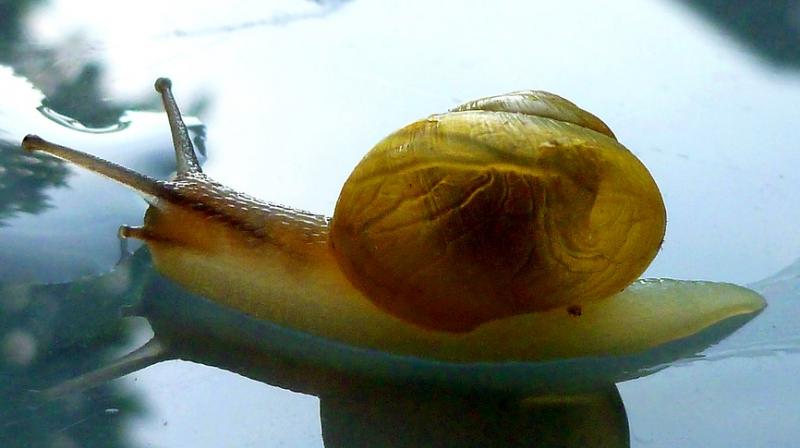Sea snail venom found to have healing compound for painkillers

Washington:Compounds from a tiny venomous snail, capable of paralysing or killing its prey, may lead to better painkillers that could replace highly addictive opioids, scientists say.
Scientists at the University of Utah in the US have found a compound that blocks pain by targeting a pathway not associated with opioids. Research in rodents indicates that the benefits continue long after the compound has cleared the body. The opioid crisis has reached epidemic proportions. Opioids is highly addictive and according to the US Centres for Disease Control and Prevention, 91 Americans die every day from an opioid overdose.
The medical community is in need of alternative therapies that do not rely on the opioid pathways to relieve pain. "Nature has evolved molecules that are extremely sophisticated and can have unexpected applications. We were interested in using venoms to understand different pathways in the nervous system," said Baldomera Olivera, professor at the University of Utah.
Conus regius, a small marine cone snail common to the Caribbean Sea, packs a venomous punch, capable of paralysing and killing its prey. Researchers found that a compound isolated from snail's venom, Rg1A, acts on a pain pathway distinct from that targeted by opioid drugs. Using rodent models, the scientists showed that a9a10 nicotinic acetylcholine receptors (nAChR) functions as a pain pathway receptor and that RgIA4 is an effective compound to block this receptor.The pathway adds to a small number of nonopioid-based pathways that could be further developed to treat chronic pain.
The duration of pain relief is long, greatly outlasting the presence of the compound in the animal's system. The compound works its way through the body in 4 hours, but the scientists found the beneficial effects lingered. "We found that the compound was still working 72 hours after the injection, still preventing pain," said J Michael McIntosh, professor at the University of Utah. The duration of the outcome may suggest that the snail compound has a restorative effect on some components of the nervous system.
"What is particularly exciting about these results is the aspect of prevention," said McIntosh."Once chronic pain has developed, it is difficult to treat. This compound offers a potential new pathway to prevent pain from developing in the first place and offer a new therapy to patients who have run out of options," he said.The researchers will continue to the next step of pre-clinical testing to investigate the safety and effectiveness of a new drug therapy. The research was published in the journal PNAS.

